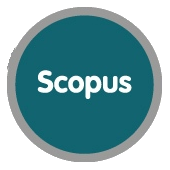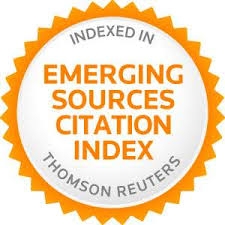PISA y TALIS ¿congruencia o discrepancia?
Resumen
Las evaluaciones educativas internacionales a gran escala ofrecen información de interés para la comunidad educativa, científica y política. Son muchos los estudios derivados de ellas, tanto a nivel nacional como internacional. Por otra parte, es bien conocida, desde el origen de estas macroevaluaciones, la diversidad de valoraciones que han generado. En este contexto, el objetivo del trabajo que aquí se presenta es estudiar las relaciones entre los resultados de PISA 2012 y los relativos a práctica docente de secundaria de TALIS 2013, tratando de analizar las congruencias o discrepancias entre los resultados de ambas. Se tomaron los datos del estudio TALIS-PISA link. Los análisis realizados, de tipo descriptivo, tomando las puntuaciones globales en ambas evaluaciones muestran discrepancias evidentes, ya que países que ocupan primeras posiciones en los resultados de los estudiantes en PISA se ubican en últimos lugares en práctica docente del profesorado., donde se supone que las relaciones se debieran producir con mayor intensidad al existir una relación más directa entre los alumnos y los profesores evaluados. Los análisis realizados muestran igualmente la falta de coherencia esperada. Estos resultados, llevan a reflexionar sobre las posibles causas que subyacen y se propone la necesidad de un diseño coordinado de ambos procesos evaluativos
Palabras clave
Referencias
Albergaria-Almeida, P., da Silva Lopes, B., & Martinho, M. (2015). Student assessment strategies in Portugal: an analysis of TALIS 2013. Procedia-Social and Behavioral Sciences, 186, 841-846. doi:10.1016/j.sbspro.2015.04.143
Calero, J., & Escardíbul, J. O. (2012). El rendimiento del alumnado de origen inmigrante en PISA 2012. PISA, 4-31.
Carabaña, J. (2015). La inutilidad de PISA para las escuelas. Madrid: La Catarata.
Clotfelte, C.T., Ladd, H. F. y Vigdor, J. L. (2007). Teacher Credentials and Student Achievement in High School: A Cross Subject Analysis with Fixed Effects. Journal of Human Resources, 45, 655-681. DOI: 10.3386/w13617
Dohn, N. B. (2007). Knowledge and skills for PISA-Assessing the assessment. Journal of Philosophy of Education, 41(1), 1-16. DOI: 10.1111/j.1467-9752.2007.00542.x
Eveleigh, F., & Freeman, C. (2012). An exploratory analysis of the TALIS and PISA link data: an investigation of the possible relationships. The Need for Educational Research to Champion Freedom, Education and Development for All, ECER 2012.
Fernandez-Díaz, M. J., Rodríguez-Mantilla, J. M., & Martínez-Zarzuelo, A. (2015). Teaching Practice of Secondary Education Teachers in Spain according to TALIS 2013. Revista Española de Pedagogía, 73(261), 225-244.
Ferrer, F. (2012). PISA: Aportaciones e incidencia sobre las políticas educativas nacionales. Revista española de educación comparada, (19), 11-16. DOI: http://dx.doi.org/10.5944/reec.19.2012.7941
Font, C. M., Badia, M. C., Alemany, I. G., Besora, M. C., Gisbert, D. D., Arce, R. L., Alonso, P. C., Seuba, M. C., Castilla, M. N., Lamo, S. S., Valdivia, I. M. Á., Villanueva, L. V. y Boekaerts, M. (2009). Pisa como excusa.: Repensar la evaluación para cambiar la enseñanza (Vol. 24). Grao.
Grek, S. (2009). Governing by numbers: The PISA ‘effect’in Europe. Journal of education policy, 24(1), 23-37. DOI:10.1080/02680930802412669
Gumus, E., & Bellibas, M. S. (2016). The effects of professional development activities on principals’ perceived instructional leadership practices: multi-country data analysis using TALIS 2013. Educational Studies, 1-15. DOI:10.1080/03055698.2016.1172958
Gustafsson, J. E. (2003). What Do We Know About Effects of School Resources on Educational Results?. Swedish Economic Policy Review, 10, 77-110.
Hair, J., Anderson, R., Tathan, R. y Black, W. (2009). Análisis multivariante (Madrid, Pearson).
Hernández, F. H. (2006). El informe PISA: una oportunidad para replantear el sentido de aprender en la escuela secundaria. Revista de educación, (1), 357-379.
Jensen, B., Sandoval, A., Knoll, S y González, E.J. (2012). The Experience of New Teachers: Results from TALIS 2008. OECD Publishing.
Kaplan, D., & Turner, A. (2012). Statistical Matching of PISA 2009 and TALIS 2008 Data in Iceland, OECD Education Working Papers, 78. Paris: OECD Publishing.
Kelly, D., Nord, C. W., Jenkins, F., Chan, J. Y., & Kastberg, D. (2013). Performance of US 15-Year-Old Students in Mathematics, Science, and Reading Literacy in an International Context. First Look at PISA 2012. NCES 2014-024. National Center for Education Statistics.
Lizasoain, L., Tourón, J., & Sobrino, Á. (2015). La evaluación del profesorado español y el impacto del feedback en las prácticas docentes. Análisis de TALIS 2013. Revista Española de Pedagogía, 73(262), 465-481.
Martín, E., & Rizo, F. M. (2009). Avances y desafíos en la evaluación educativa. Organización de Estados Iberoamericanos para la Educación, la Ciencia y la Cultura.
ME, Ministerio de Educación. (2009). TALIS (OCDE) Estudio Internacional sobre la Enseñanza y Aprendizaje. Informe Español. Madrid: Ministerio de Educación, Subdirección General de Documentación y Publicaciones.
MECD, Ministerio de Educación, Cultura y Deporte. (2014a). PISA 2012 Programa para la evaluación internacional de los alumnos. Informe español. Resultados y contexto. Madrid: Ministerio de Educación, Cultura y Deporte.
MECD, Ministerio de Educación, Cultura y Deporte. (2014b). PISA 2012 Competencia Financiera. Informe español. Madrid: Ministerio de Educación, Cultura y Deporte.
MECD, Ministerio de Educación, Cultura y Deporte. (2014c). PISA 2012 Resolución de problemas de la vida real. Resultados de matemáticas y lectura por ordenador. Informe español. Madrid: Ministerio de Educación, Cultura y Deporte.
MECD, Ministerio de Educación, Cultura y Deporte. (2014d). TALIS 2013. Estudio internacional de la enseñanza y el aprendizaje. Informe español. Madrid: Ministerio de Educación, Cultura y Deporte.
Méndez, I. (2015). Prácticas Docentes y Rendimiento Estudiantil: Evidencia a partir de PISA 2012 y TALIS 2013. Conserjería de Educación, Cultura y Turismo del Gobierno de la Rioja, Fundación Santillana e Instituto Nacional de Evaluación Educativa.
Mendizábal, Á. C. (2016). Explorando los límites de PISA. RASE: Revista de la Asociación de Sociología de la Educación, 9(1), 163-165.
Ming-ren, Z. H. A. O. (2015). The Status and Implications of Teachers' Professional Development in An International Perspective: Based on the Results of TALIS 2013. Teacher Education Research, 3, 016.
Mortimore, P. (2009). Alternative models for analysing and representing countries’ performance in PISA. Paper commissioned by Education International Research Institute, Brussels, Belgium.
Neves, C. (2008). Las organizaciones internacionales y la evaluación de los sistemas de educación y formación: Análisis crítico y comparativo. Revista Europea de Formación Profesional, (45), 78-98.
OECD, Organisation for Economic Co-operation and Development. (2009). Creating effective teaching and learning environments: First results from TALIS. Paris: OECD Publishing.
OECD, Organisation for Economic Co-operation and Development (2013a). PISA 2012 Results: Excellence through Equity. Giving every student the chance to succeed. Vol II. OECD Publishing.
OECD, Organisation for Economic Co-operation and Development (2013b). PISA 2012 Results: Ready to Learn. Students’engagement, drive and self-beliefs. Vol III. OECD Publishing.
OECD, Organisation for Economic Co-operation and Development (2013c). PISA 2012 Results: What Makes Schools Successful? Resources, policies and practices. Vol IV. OECD Publishing.
OECD, Organisation for Economic Co-operation and Development (2013d). PISA 2012. Technical Report. OECD Publishing.
OECD, Organisation for Economic Co-operation and Development (2014a). PISA 2012 Results: What Students Know and Can Do. Student performance in mathematics, reading and science. Vol I. OECD Publishing.
OECD, Organisation for Economic Co-operation and Development (2014b). PISA 2012 Results: Creative Problem Solving. Students’ skilla in tackling real-life problems. Vol V. OECD Publishing.
OECD, Organisation for Economic Co-operation and Development (2014c). PISA 2012 Results: Students and Money. Financial Literacy skills for the 21st century. Vol VI. OECD Publishing.
OECD, Organisation for Economic Co-operation and Development. (2014d). TALIS 2013 Results: An International Perspective on Teaching and Learning. Paris: OECD Publishing.
Peña-López, I. (2012). PISA 2012 Assessment and Analytical Framework. Mathematics, Reading, Science, Problem Solving and Financial Literacy.
Pérez, A. I., & Soto, E. (2011). Luces y sombras de PISA. Sentido educativo de las evaluaciones externas. Cultura y Educación, 23(2), 171-182. DOI: 10.1174/113564011795944758
Perry, S. M., Sealy, K. M., & Hawkins, R. J. (2016). Opportunity to Learn and Students from Economically Disadvantages Homes: Implications for School Leaders Through an Examination of TALIS 2013. Available at SSRN (Social Science Research Network) 2717054.
Ruiz, J. B., Gil, M. G., Navas, M. F., Ramos, R. Y., Ruiz, M. P. S., & Núñez, M. J. S. (2011). Todos queremos ser Finlandia”. Los efectos secundarios de PISA. Education in the Knowledge Society (EKS), 12(1), 320-339.
Sánchez, C. C., & Delgado, F. J. H. (2013). Informe PISA en España. Un análisis al detalle. Profesorado. Revista de Currículum y Formación del Profesorado, 17(2), 20.
Sánchez, E. & García-Rodicio, H. (2006). Re-lectura del estudio PISA: qué y cómo se evalúa e interpreta el rendimiento de los alumnos en la lectura. Revista de educación, (1), 195-226.
Sealy, K. M., Perry, S. M., & DeNicola, T. C. (2016). Relationships and Predictors of Principal Job Satisfaction Across Multiple Countries: A Study Using Talis 2013 and PISA 2012. Available at SSRN 2717056.
Sedghi, A., Arnett, G., & Chalabi, M. (2013). Pisa 2012 results: which country does best at reading, maths and science. The Guardian. Retrieved October, 21, 2015.
Sjøberg, S. (2015). PISA and global educational governance–A critique of the project, its uses and implications. Eurasia Journal of Mathematics, Science & Technology Education, 11(1), 111-127. DOI: 10.12973/eurasia.2015.1310a
Stacey, K. (2015). The international assessment of mathematical literacy: PISA 2012 framework and items. In Selected Regular Lectures from the 12th International Congress on Mathematical Education (pp. 771-790). Springer International Publishing.
Thomson, S., De Bortoli, L., & Buckley, S. (2013). PISA 2012: How Australia measures up. Melbourne: Australian Council for Educational Research.
Vieluf, S., Kaplan, D., Klieme, E. y Bayer, S. (2012). Teaching Practices and Pedagogical Innovation: Evidence from TALIS. OECD Publishing.
Villar, A. (2013). Rendimiento, esfuerzo y productividad: análisis de los resultados en matemáticas de los estudiantes españoles según PISA (2012). PISA 2012: Programa para la evaluación internacional de los alumnos.
Wayne, A. J. y Youngs, P. (2003). Teacher characteristics and student achievement gains: A review. Review of Educational Research, 73, 89-122.
Wenglinsky, H. (2002). How schools matter: The link between teacher classroom practices and student academic performance. Education Policy Analysis Archives, 11(12).
Wheater, R. (2013). Achievement of 15 year olds in England: PISA 2012 national report (OECD Programme for International Student Assessment), December 2013.
Enlaces refback
- No hay ningún enlace refback.


